JavaWeb 项目 --- 表白墙 和 在线相册
Posted wwzzzzzzzzz
tags:
篇首语:本文由小常识网(cha138.com)小编为大家整理,主要介绍了JavaWeb 项目 --- 表白墙 和 在线相册相关的知识,希望对你有一定的参考价值。
文章目录
一. 案例: 表白墙 (使用模板引擎)
1. 首先创建 maven 项目
引入需要的依赖,创建必要的目录
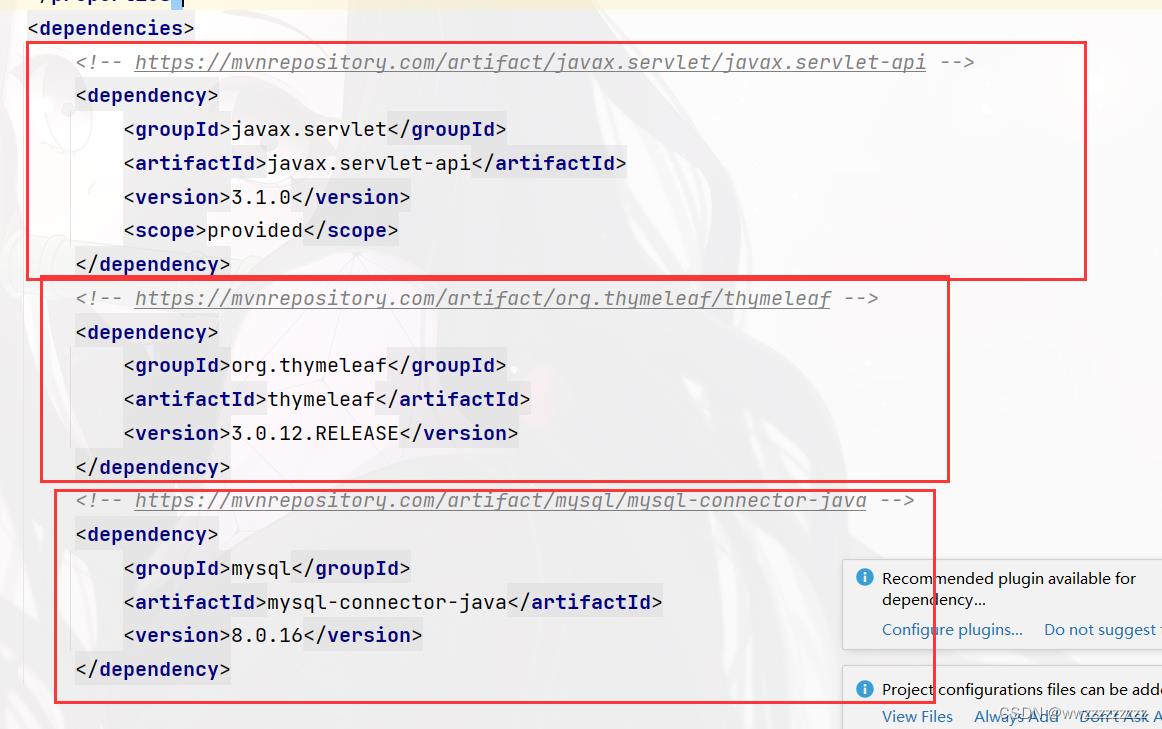

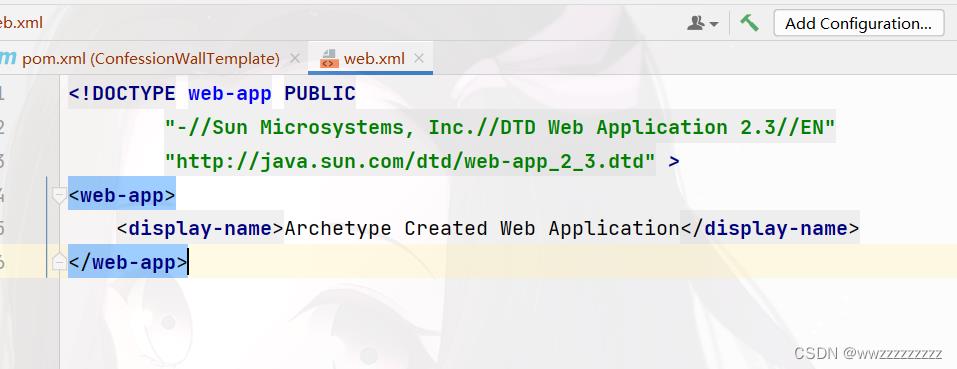
2. 创建好模板文件

<!DOCTYPE html>
<html lang="en">
<head>
<meta charset="UTF-8">
<meta http-equiv="X-UA-Compatible" content="IE=edge">
<meta name="viewport" content="width=device-width, initial-scale=1.0">
<title>表白墙</title>
</head>
<body>
<form action="confession" method="post">
<div class="parent">
<div id="wall">表白墙</div>
<div id="remind">输入后点击提交,会将信息显示在表格中</div>
<div class="one"><span class="two">谁:</span><input type="text" class="text" name="from"></div>
<div class="one"><span class="two">对谁:</span><input type="text" class="text" name="to"></div>
<div class="one"><span class="two">说什么:</span><input type="text" class="text" name="message"></div>
<div class="one"><input type="submit" value="提 交" class="press"></div>
<div class="elem" th:each="message : $messages">
<span th:text="$message.from">wz</span>对<span th:text="$message.to">zw</span>说: <span th:text="$message.message">wzz</span>
</div>
</div>
</form>
<style>
/* 去除浏览器默认样式 */
*
margin: 0;
padding: 0;
/* 设置总宽度 */
.parent
width: 400px;
margin: 0 auto;
/* 设置表白墙样式 */
#wall
font-size: 30px;
font-weight: 700;
text-align: center;
margin: 5px;
/* 设置提示信息样式 */
#remind
font-size:13px;
text-align: center;
color:gray;
margin: 5px;
/* 设置弹性布局 */
.one
display: flex;
justify-content: center;
align-items: center;
height: 40px;
/* 设置文字内容 */
.two
width: 100px;
line-height: 40px;
/* 设置输入框 */
.one .text
width: 200px;
height: 20px;
padding-left: 3px;
/* 提交按钮的设置 */
.one .press
width: 304px;
height: 40px;
color:white;
background-color: orange;
border-radius: 5px;
border: none;
/* 设置鼠标点击的时候改变颜色 */
.one .press:active
background-color: red;
/* 提交之后内容的设置 */
.elem
text-align: center;
margin: 15px;
</style>
</body>
</html>
3. 使用数据库存储数据.创建一个类用于数据库连接
ConnectionDB 类
import com.mysql.cj.jdbc.MysqlDataSource;
import javax.sql.DataSource;
import java.sql.Connection;
import java.sql.PreparedStatement;
import java.sql.ResultSet;
import java.sql.SQLException;
public class ConnectionDB
private static final String URL = "jdbc:mysql://127.0.0.1:3306/confessionWall2?characterEncoding=utf-8&useSSL=true&serverTimezone=UTC";
private static final String USERNAME = "root";
private static final String PASSWORD = "0000";
private static volatile DataSource dataSource = null;
public static DataSource getDataSource()
if(dataSource == null)
synchronized (ConnectionDB.class)
if(dataSource == null)
dataSource = new MysqlDataSource();
((MysqlDataSource) dataSource).setURL(URL);
((MysqlDataSource) dataSource).setUser(USERNAME);
((MysqlDataSource) dataSource).setPassword(PASSWORD);
return dataSource;
public static Connection getConnection() throws SQLException
return getDataSource().getConnection();
public static void close(Connection connection, PreparedStatement statement, ResultSet resultSet)
if(resultSet != null)
try
resultSet.close();
catch (SQLException e)
e.printStackTrace();
if(statement != null)
try
statement.close();
catch (SQLException e)
e.printStackTrace();
if(connection != null)
try
connection.close();
catch (SQLException e)
e.printStackTrace();
4. 使用 监视器 来初始化 Thymeleaf
ThymeleafConfig 类
注意加上注解
import org.thymeleaf.TemplateEngine;
import org.thymeleaf.templateresolver.ServletContextTemplateResolver;
import javax.servlet.ServletContext;
import javax.servlet.ServletContextEvent;
import javax.servlet.ServletContextListener;
import javax.servlet.annotation.WebListener;
@WebListener
public class ThymeleafConfig implements ServletContextListener
@Override
public void contextInitialized(ServletContextEvent servletContextEvent)
System.out.println("ServletContext 初始化完毕!");
ServletContext context = servletContextEvent.getServletContext();
TemplateEngine engine = new TemplateEngine();
ServletContextTemplateResolver resolver = new ServletContextTemplateResolver(context);
resolver.setPrefix("/WEB-INF/template/");
resolver.setSuffix(".html");
resolver.setCharacterEncoding("utf-8");
engine.setTemplateResolver(resolver);
context.setAttribute("engine",engine);
@Override
public void contextDestroyed(ServletContextEvent servletContextEvent)
5. 编写 Servlet 代码
首先创建一个 Confession 类
class Confession
public String from;
public String to;
public String message;
① 重写 doGet 方法
@Override
protected void doGet(HttpServletRequest req, HttpServletResponse resp) throws ServletException, IOException
resp.setContentType("text/html;charset=utf-8");
List<Confession> list = load();
TemplateEngine engine = (TemplateEngine) getServletContext().getAttribute("engine");
WebContext webContext = new WebContext(req,resp,getServletContext());
webContext.setVariable("messages",list);
engine.process("confessionwall",webContext, resp.getWriter());
② 重写 doPost 方法
resp.setContentType("text/html;charset=utf-8");
Confession confession = new Confession();
confession.from = req.getParameter("from");
confession.to = req.getParameter("to");
confession.message = req.getParameter("message");
save(confession);
resp.sendRedirect("confession");
③ 实现 load 方法
private List<Confession> load()
List<Confession> list = new ArrayList<>();
Connection connection = null;
PreparedStatement statement = null;
ResultSet resultSet = null;
try
connection = ConnectionDB.getConnection();
String sql = "select * from confession";
statement = connection.prepareStatement(sql);
resultSet = statement.executeQuery();
while(resultSet.next())
Confession confession = new Confession();
confession.from =resultSet.getString("from");
confession.to = resultSet.getString("to");
confession.message = resultSet.getString("message");
list.add(confession);
catch (SQLException throwables)
throwables.printStackTrace();
finally
ConnectionDB.close(connection,statement,resultSet);
return list;
④ 实现 save 方法
private void save(Confession confession)
Connection connection = null;
PreparedStatement statement = null;
try
connection = ConnectionDB.getConnection();
String sql = "insert into confession values (?,?,?)";
statement = connection.prepareStatement(sql);
statement.setString(1,confession.from);
statement.setString(2, confession.to);
statement.setString(3,confession.message);
int ret = statement.executeUpdate();
if(ret == 1)
System.out.println("插入成功");
else
System.out.println("插入失败");
catch (SQLException throwables)
throwables.printStackTrace();
finally
ConnectionDB.close(connection,statement,null);
6. 注意事项
-
注意模板引擎

-
注意 乱码的情况,要添加
utf-8



-
用数据库的方法存数据,要先创建好数据库
create database confessionWall2;
use confessionWall2;
create table confession(
`from` varchar(1024),
`to` varchar(1024),
`message` varchar(1024)
);
- 还有一些必要的注解也要加上.


7. 部署之后 运行截图
浏览器输入对应的URL
在数据库为空的时候界面如下

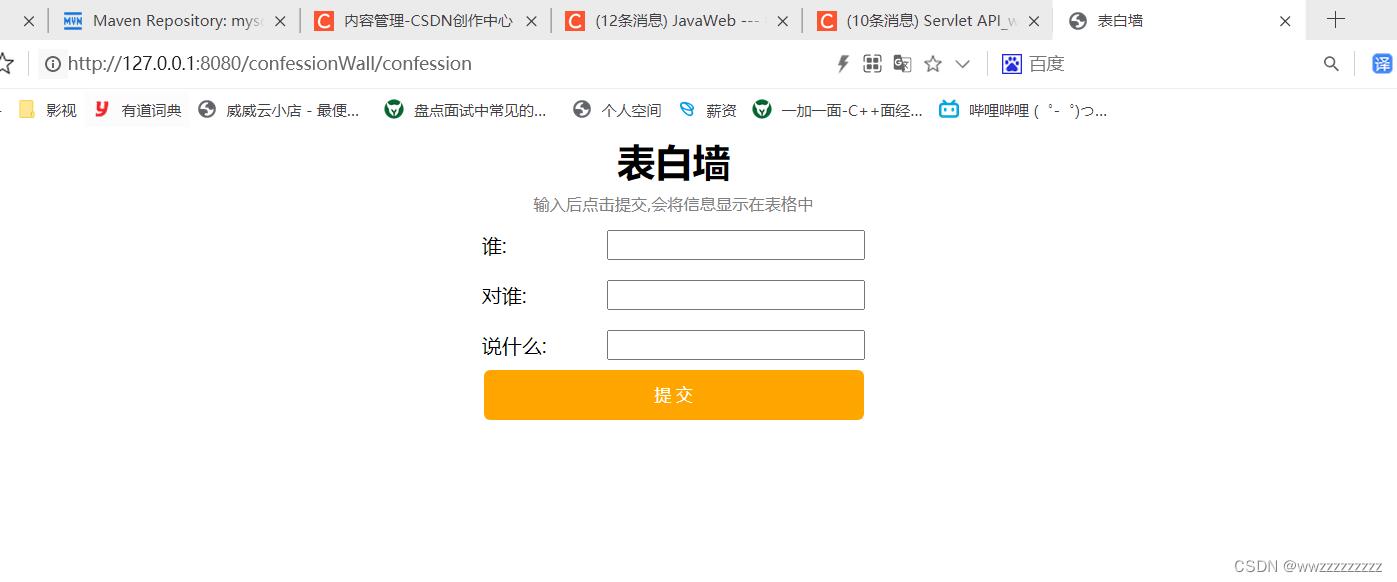
在输入几个数据之后 如下

此时的数据库中表的内容
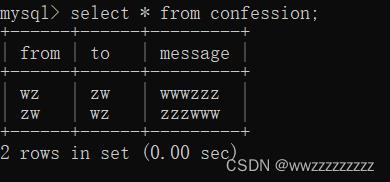
重新部署再进入URL发现数据还是存在.

二. 案例: 在线相册 (使用模板引擎)
1. 首先创建 maven 项目
引入必要的依赖,已经必要的目录
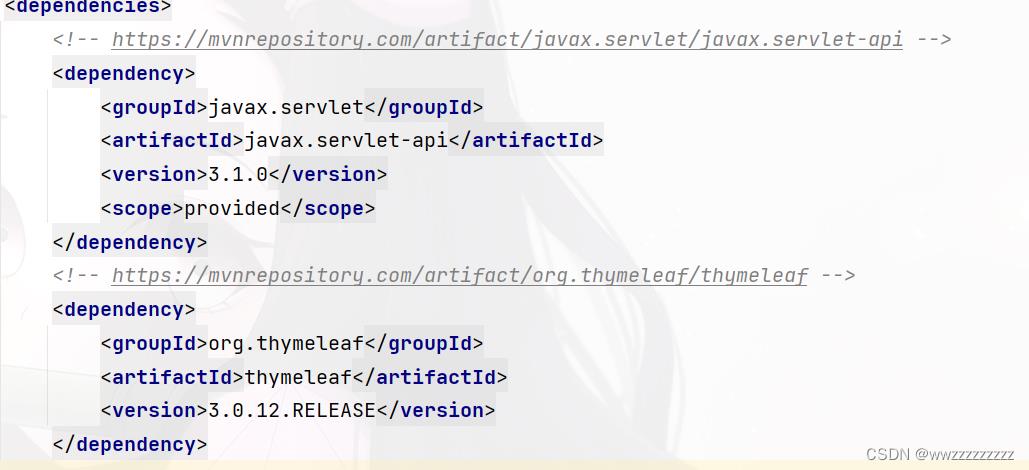

2. 创建好模板文件
image.html
<!DOCTYPE html>
<html lang=<以上是关于JavaWeb 项目 --- 表白墙 和 在线相册的主要内容,如果未能解决你的问题,请参考以下文章